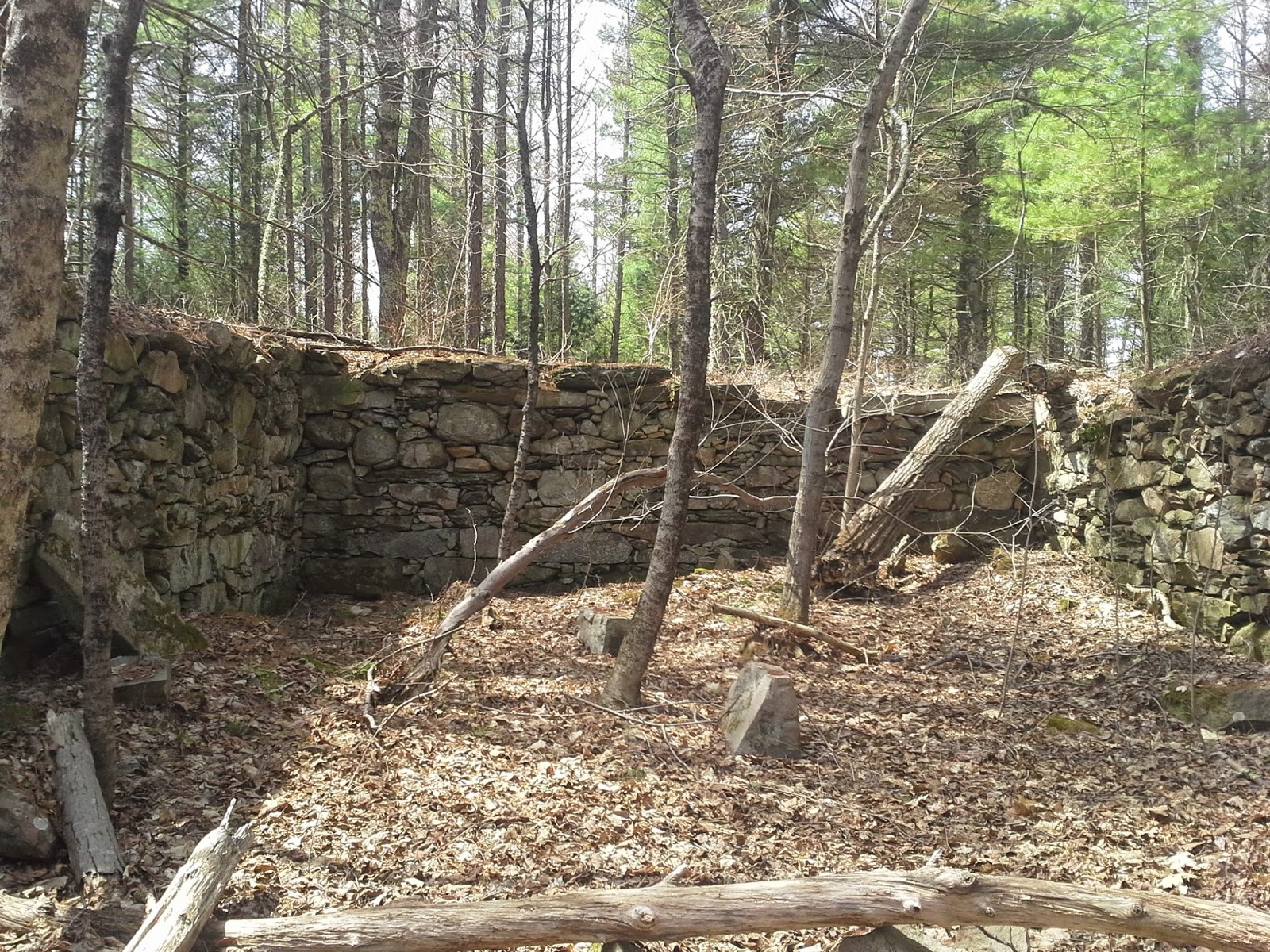There are a lot of stories about witches in New England.
Therefore, there should be stories about witches and rocks in New England! And there are...
I was recently looking through the United States Geographic Survey for places with the the word "witch" in their name. There are quite a few, and they will probably be featured in an upcoming blog post. I was particularly struck by three rocks named Witch Rock or Witches Rock in southern New England. They each have an interesting story, but today I'm writing about one I was not familiar with.
It's located in Rochester, a town in southeastern Massachusetts near New Bedford. The rock, which sits on private property near an intersection, is quite large and imposing with a height of about 12 feet. The silhouette of a witch on a broomstick is painted on it, along with the words "Witch Rock." There's no mistaking that this is Witch Rock.
The boulder has called Witch Rock for many years. An 1899 edition of The Bay State Monthly called it a "vine-covered, romantic-looking bowlder," and it was apparently a destination for picnickers and tourists who wanted to visit the bucolic countryside.
It's not quite clear how this particular rock got its supernatural reputation. As I said earlier, there are a lot of rocks in New England, and many of them are stranger looking than this one. Why did this boulder get a spooky reputation?
 |
| A vintage postcard of Witch Rock from this amazing site about boulders! |
One compelling theory is that the rock was initially a Native American holy place. In the spring 2004 issue of the New England Archaeological Society Bulletin, Martin Dudek and Craig Chartier mention a tradition that native shamans (pow-wows in the local Algonquian dialect) would sit and watch mists rise from the crevices in the stone. Perhaps this was some type of divination? English settlers usually labeled native religious practices as witchcraft, so it makes sense that an Algonquian holy rock would be renamed Witch Rock. Rather than a place for divine inspiration it became a place of terror.
The modern legends associated with Witch Rock are less sociological and more supernatural. One is that the soul of a witch hanged during the witch trials is trapped inside the rock, along with various evil spirits. All of them like to howl and sometimes try to escape through the cracks in the rock. Another legend claims the early settlers noticed the Indians avoided the rock, and concluded that it must be bewitched. A third combines all these and says the Indians avoided the rock because there was a dead witch's soul trapped in it.
Whatever the origin of its reputation, Witch Rock probably does have some connection to Native American lore. According to a May 2012 article in Southeastern Massachusetts newspaper The Wanderer, the property the boulder sits on was owned for many years by a family of Abenaki and Pequawket descent. The matriarch of the family, Shirley Vaughn Thompson Norton, told her children that the spirit of a hanged witch lived inside the boulder and would emerge every full moon. On Halloween night the boulder was naturally used as the backdrop for apple-bobbing and other festivities.
Mrs. Norton can probably be credited with maintaining the legend of Witch Rock. For example, in the 1960s she designed commemorative Witch Rock plates and sold them to the local chamber of commerce, and in the 1990s she began painting the witch's silhouette on the boulder. Sadly her family no longer owns the property but the legend seems to be firmly established now! It would be interesting to know how long her family owned the house and how long they had been telling the legend.
Rochester seems to be the place to live if you like spooky rocks. According to Mattapoisset and Old Rochester (1907) by Mary Hall Leonard, the town also has a Devil's Rock which bears the imprint of Satan's footprint. Some towns get all the fun boulders!










